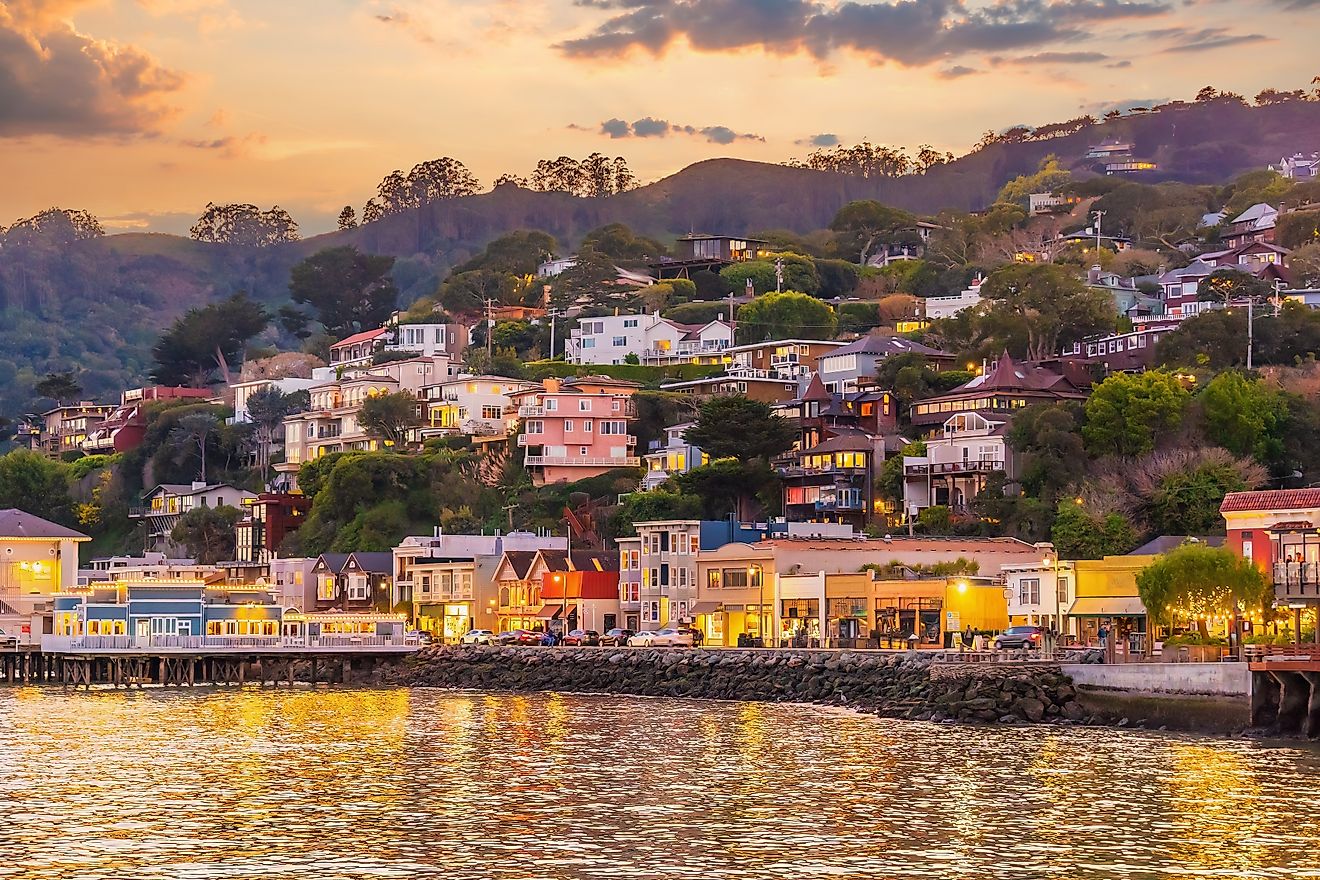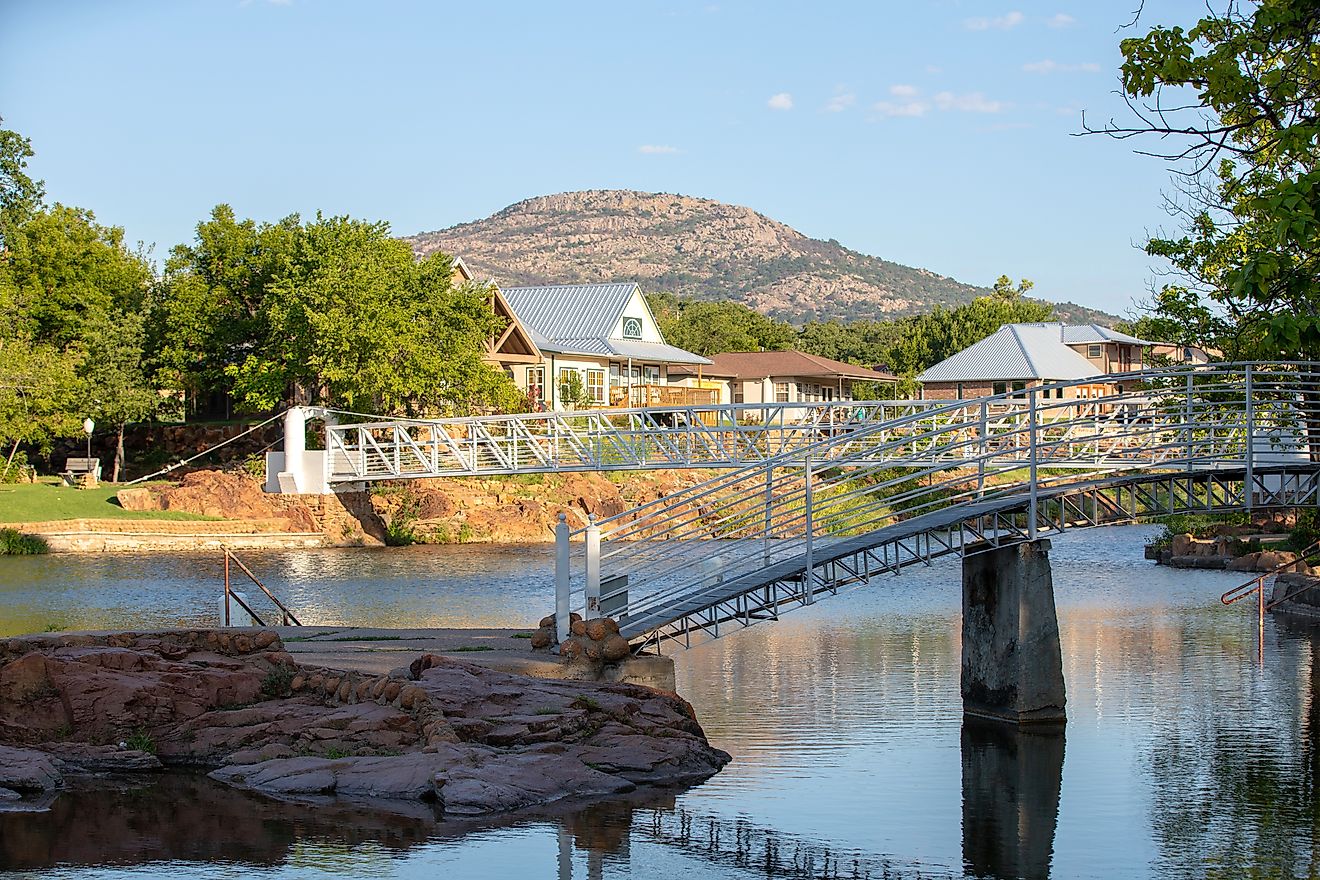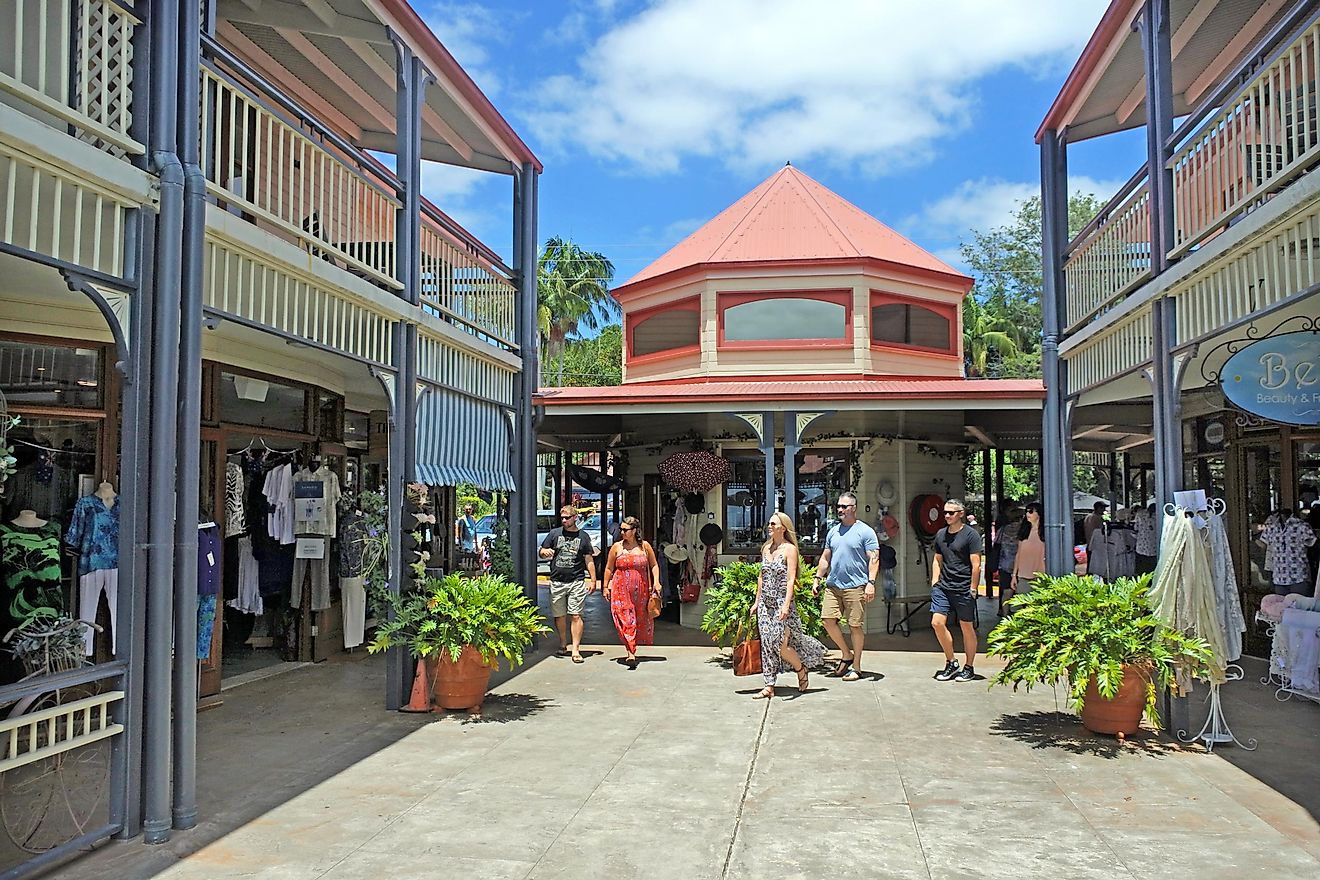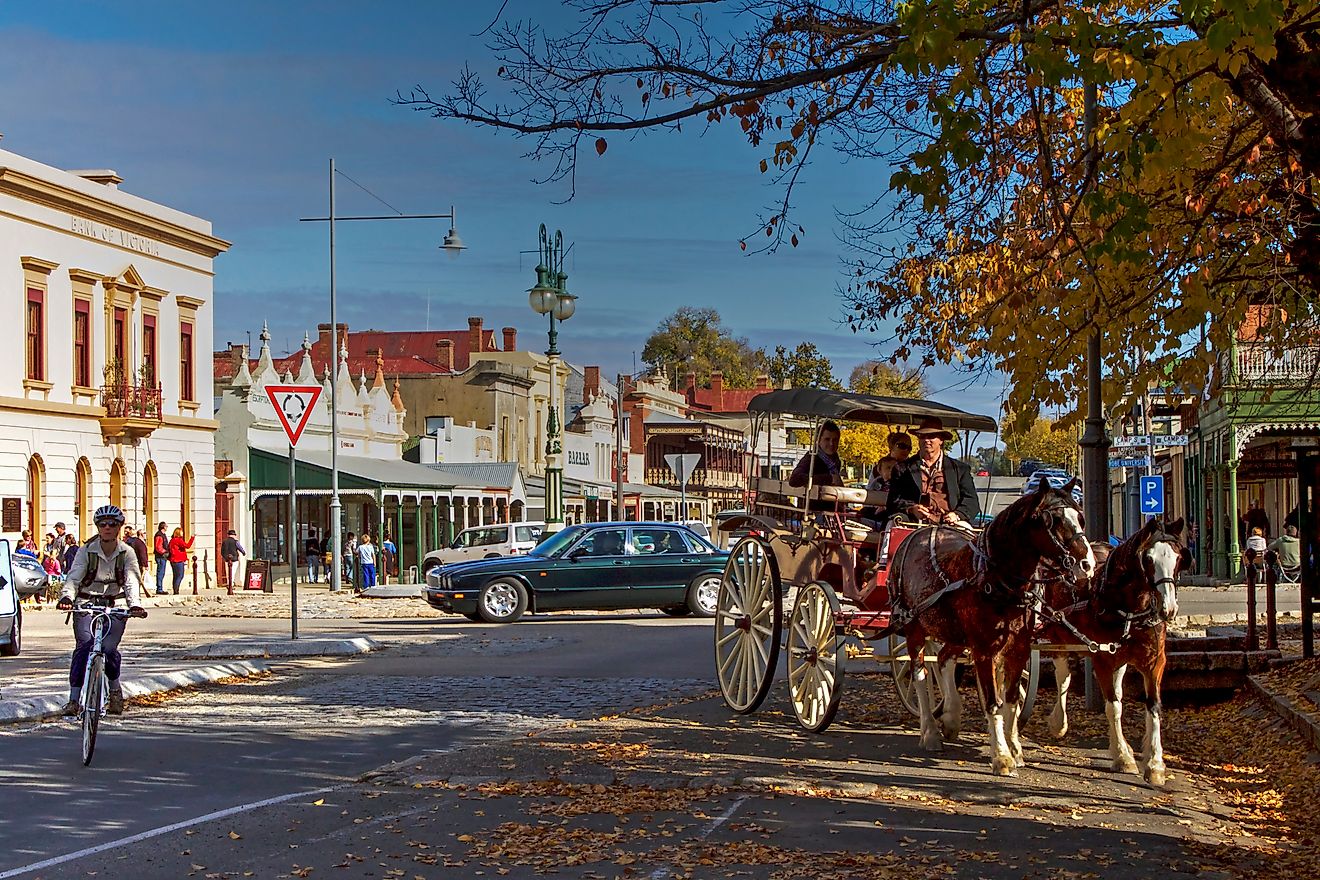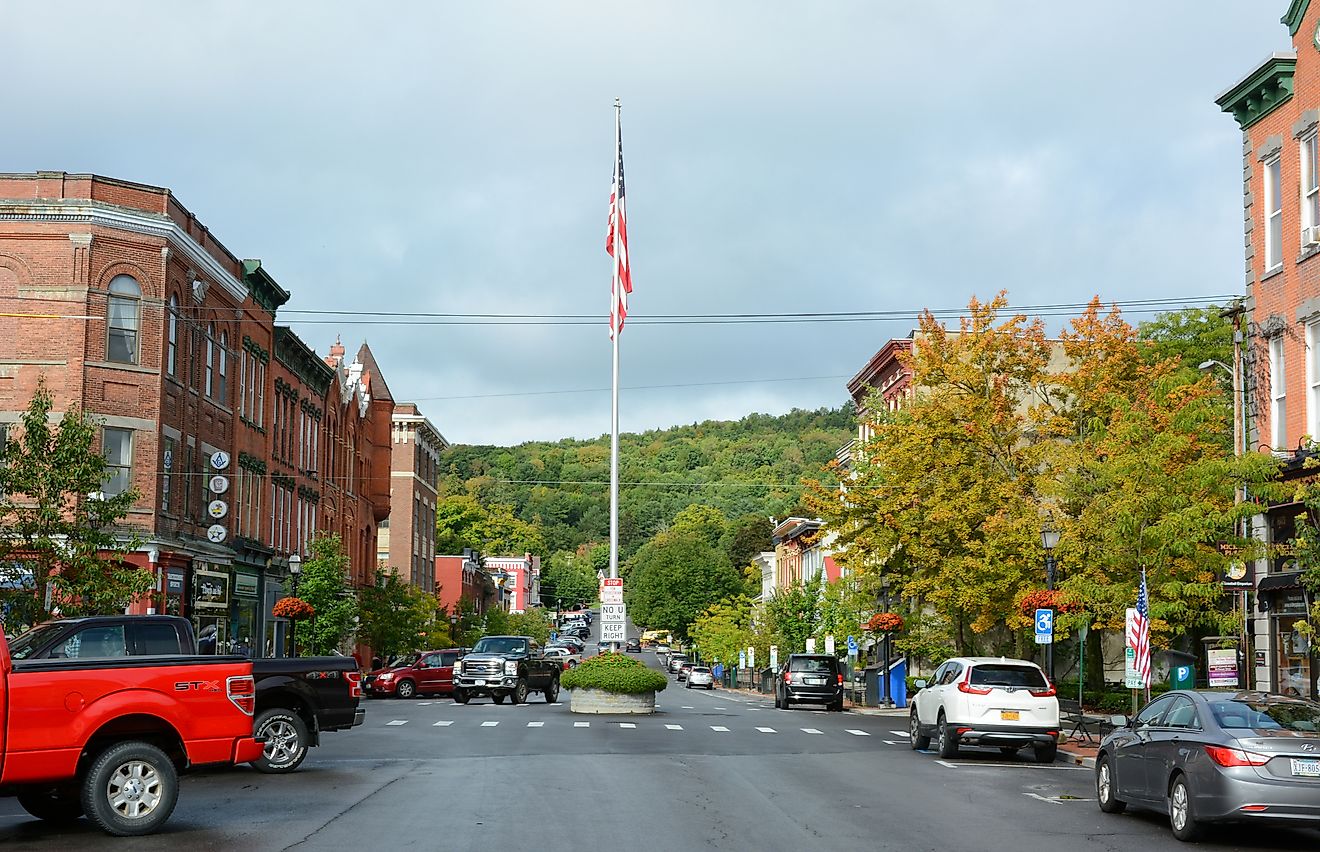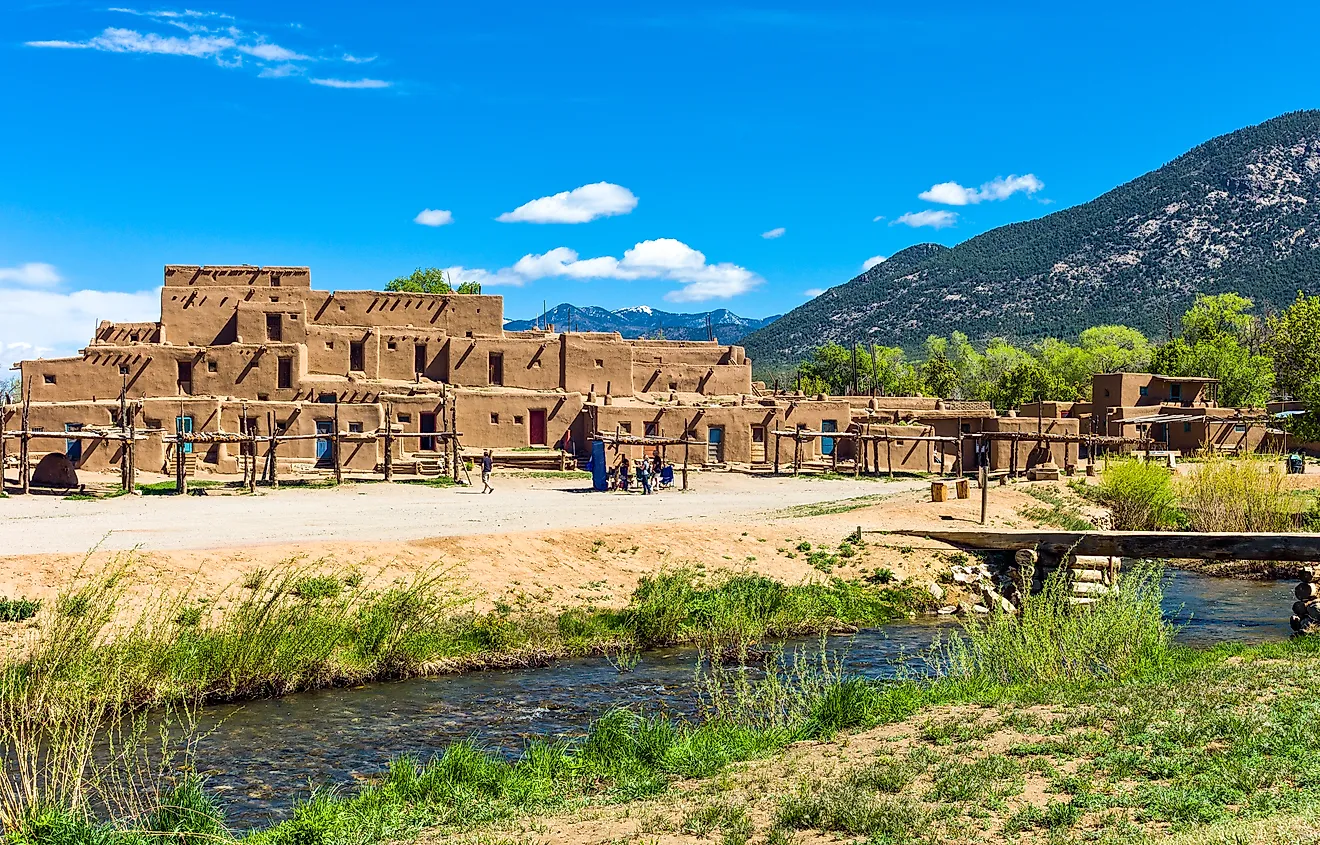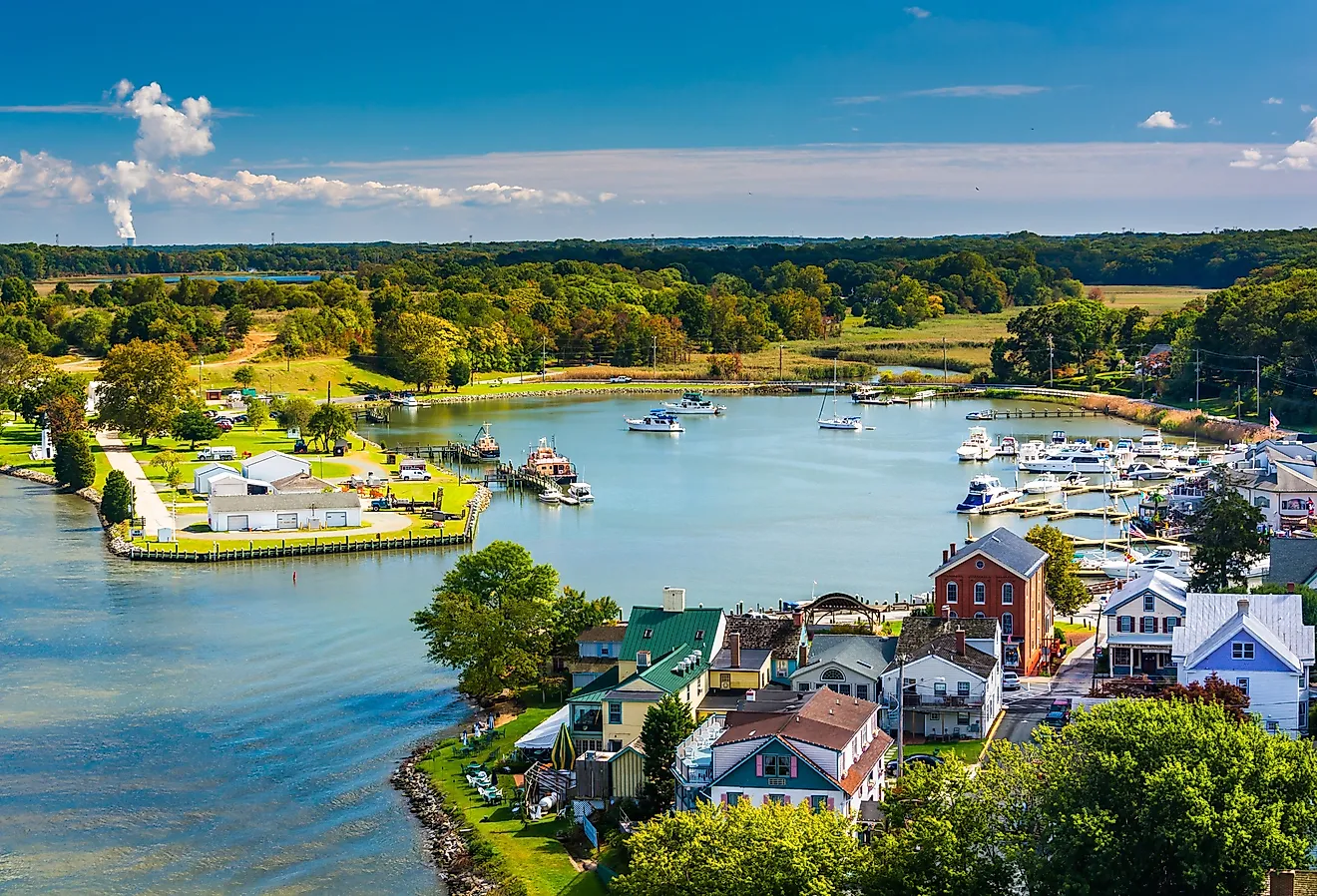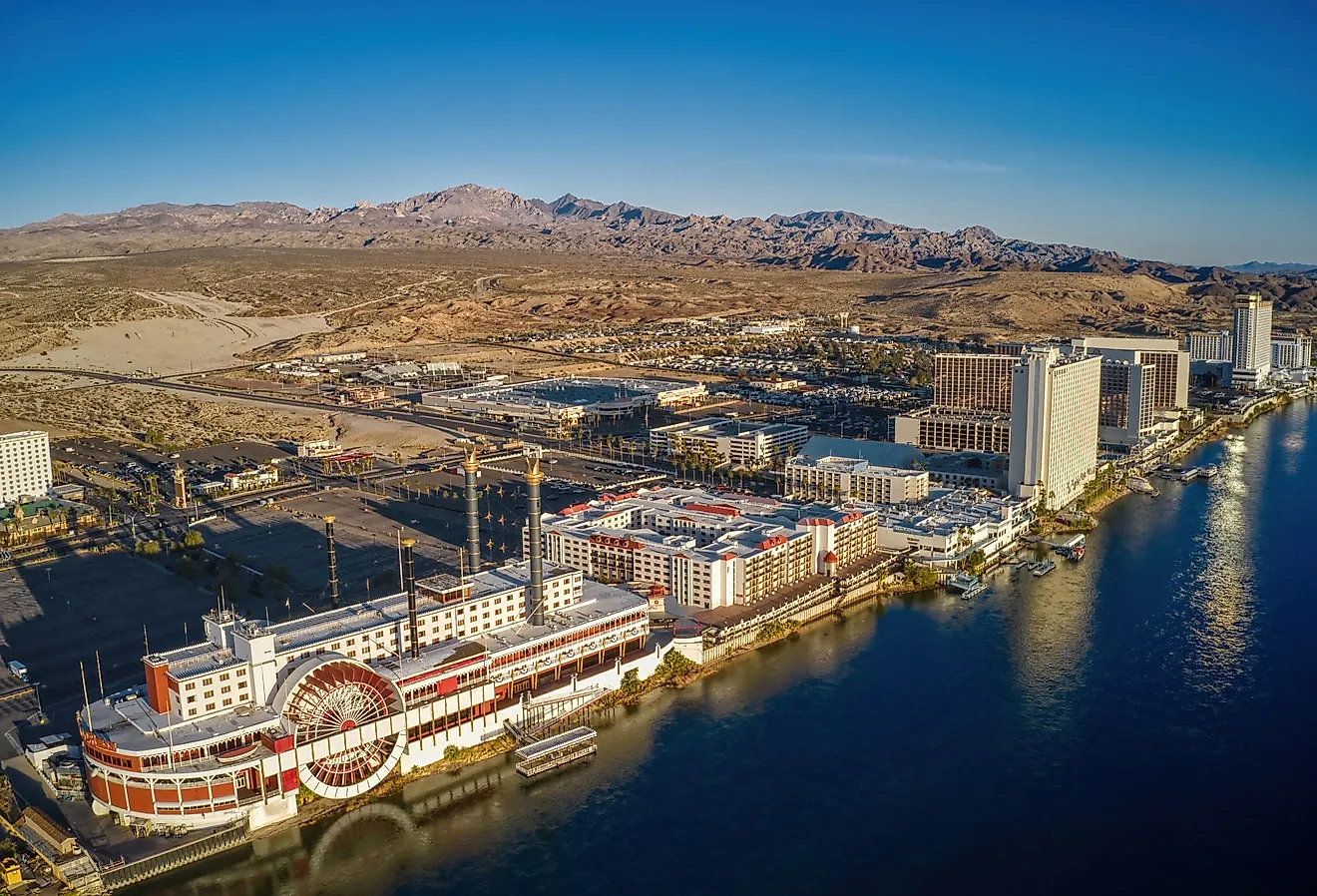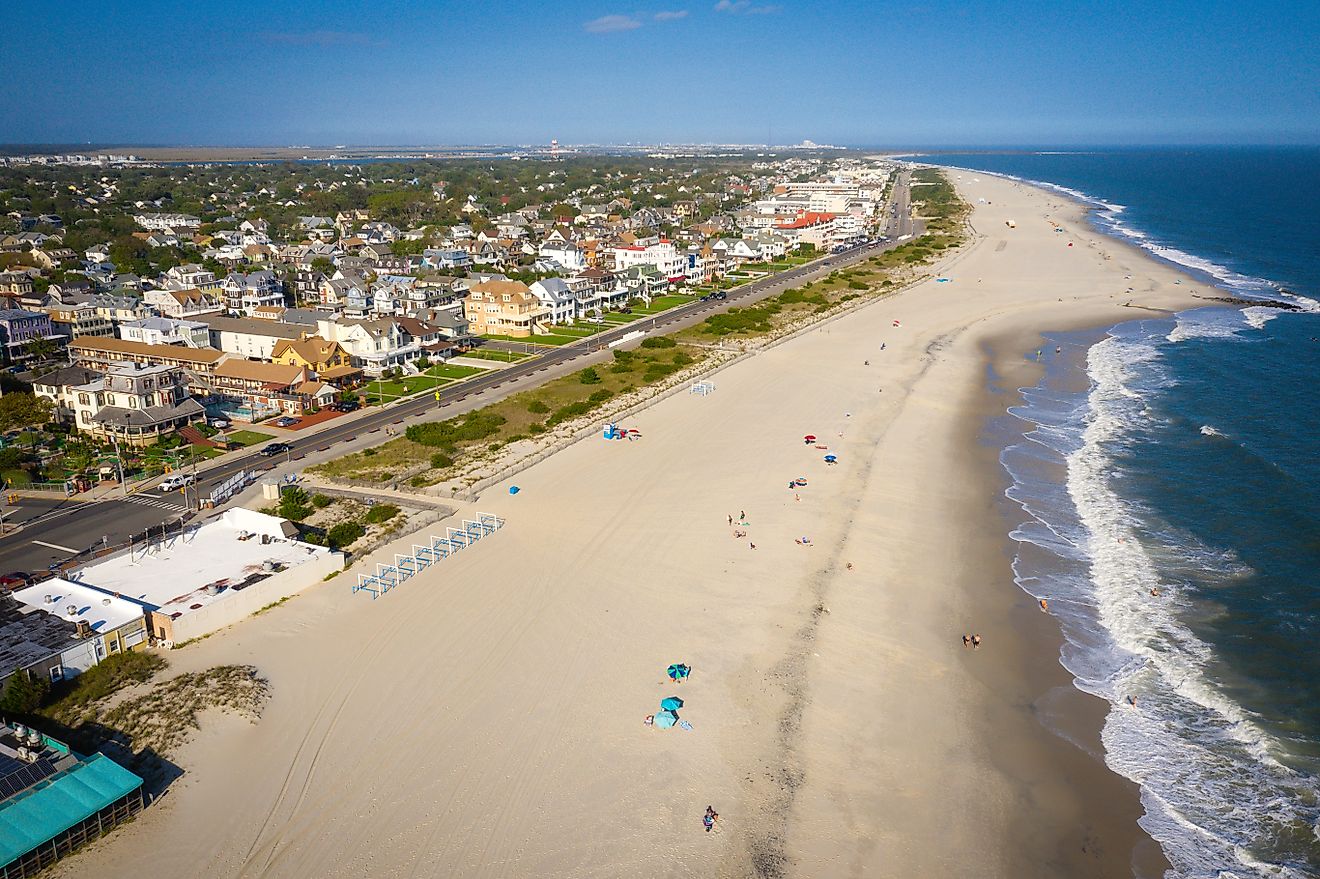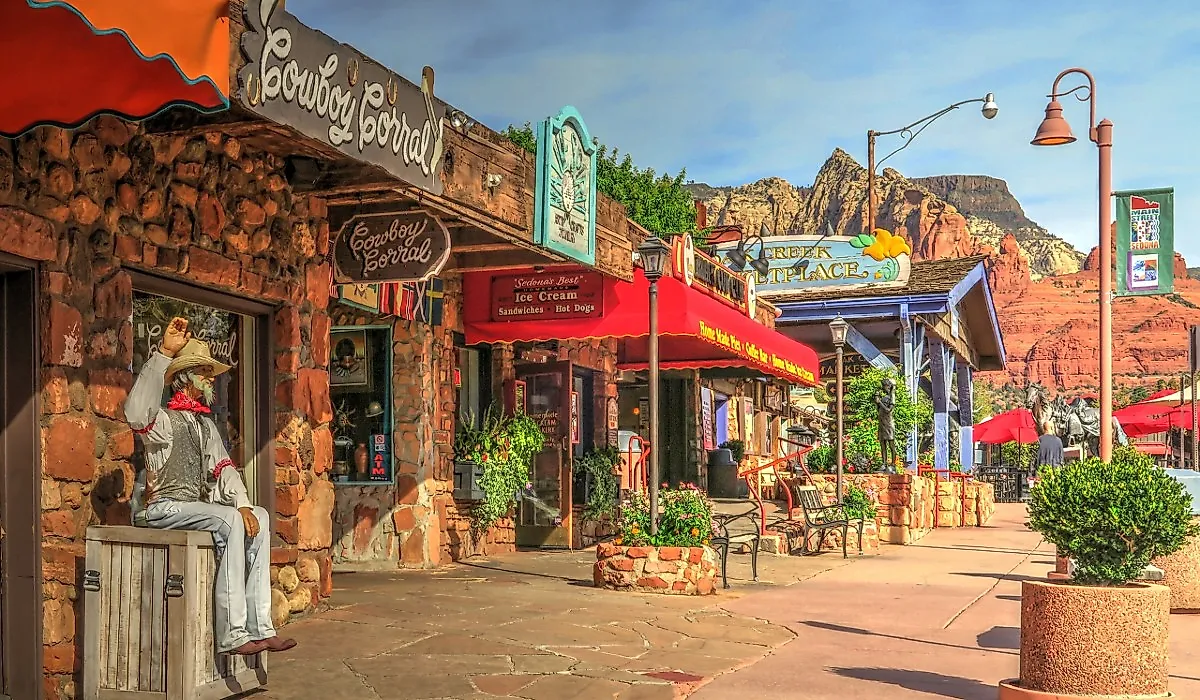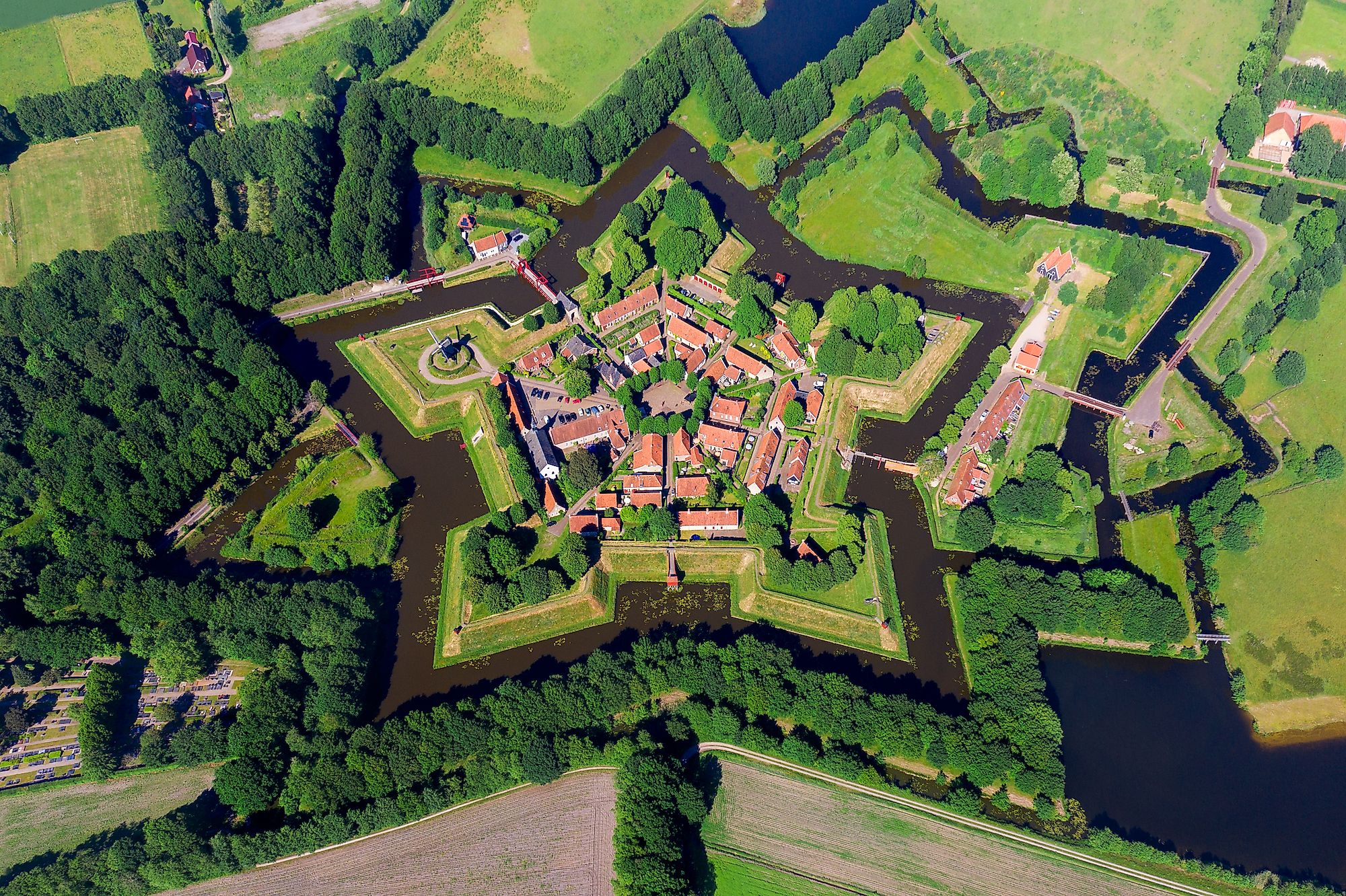
The 10 Most Beautiful Villages In The World
With the beauty being in the eyes of the beholder, attractiveness of a village also depends on world standards versus personal views. While some are more visited than others, these picture-perfect villages in one way or another will accommodate any and all tastes depending on the things that people seek.
Fort Bourtange, Netherlands
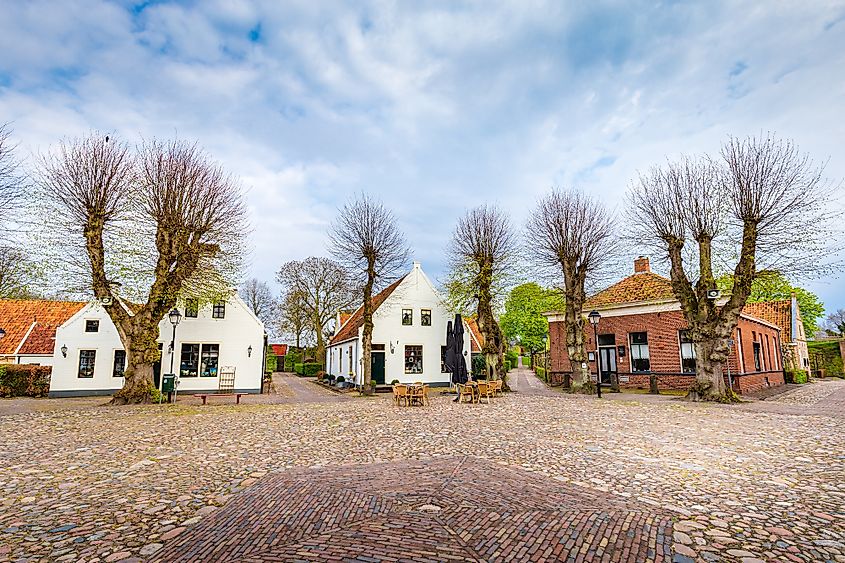
One can literally reach the stars by visiting the stellar-shaped Fort Bourtange in the Netherlands, also known as the star fort village. Built as the country's defense system of the late 16th century, it was strategically constructed in 1593 by William the Silent, the leader of the Dutch Revolt. Purposed to control the only road between Holland's Groningen and Germany during the Eighty Years’ War, it was remodelled after similarly-shaped forts in Italy of the prior century, enabling the guards to obtain a perfect view of the potential attackers on the Spaniards-controlled passage.
Later adopted by other forts of the country, the strategic five-star design allowed warding off attacks from any side. Today it is one of the few special configurations that have turned into a residence upon the completion of the warfare period. Perfectly preserved, alongside with the old military barracks, this 11-acre pentagon in Groningen encompasses historic churches, cobblestoned streets, wooden windmills, and intricately-designed bridges. Surrounded by a swampy moat, it is also historically significant for defending itself during the attack by the German army of the Prince-Bishopric of Münster in 1672.
Gásadalur Village, Faroe Islands
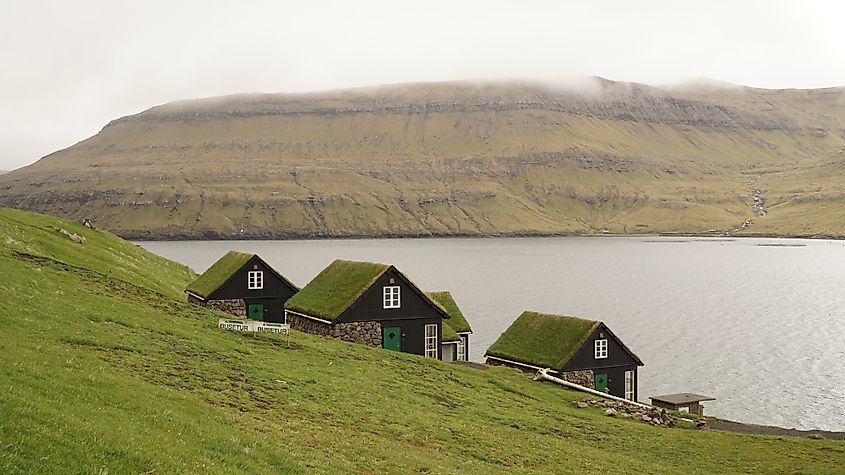
Sitting north of England and south-west to Iceland 18 tiny islands spread in a small archipelago exactly halfway between the Atlantic Ocean and the Norwegian Sea. With a population of fewer than 20 in 2002 and unheard of by the rest of the world until 2003, it is no wonder that Gasadalur perfectly preserved all of its original natural beauty. The lush, rolling green fields of the village on the upper west coast of the most south-western island Vagar with a tunnel road constructed in 2004, now has traffic and a larger population. The village is reachable from the outside by ship, followed by climbing the steep cliff over.
Featuring a dramatic cliff with panoramic views of the Mykines Island, this pastoral village also has the Mulafossur Waterfall of magnificent characteristics with free-falling waters. Sitting on the cliff’s edge it is completely surrounded by high-peaked mountains that not only part it from most of the island, but from the rest of the world. Needless to say, its tourist count has also increased with people from all over flocking to see this well-hidden on the planet, shining gem. The best way to reach the village is hiking over the 2,000 feet high mountains from their other side, followed by a trek to its hanging location.
Hallstatt, Austria
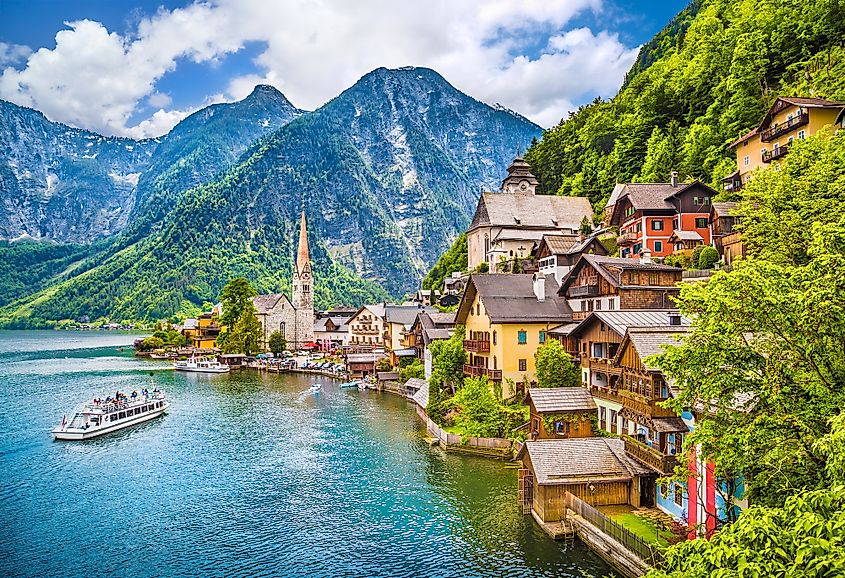
Shored by the Hallstätter See (Lake) in the vast open spaces of the lowlands at the foot of a range with the highest mountain, Dachstein, Hallstat guarantees breathtaking alpine views. A boat-ride offers a whole other perspective of Austria's oldest village, likely being the most-photographed in the world, but the crystal clear subterranean salt lake against the gorgeous granite backdrop will be imprinted into ones memory forever. The European vibe within is complete with magnificent old churches and a museum with 7,000 year old artifacts. One can relax near the beautiful fountains at countless cafes, while walking the winding streets between the intricate pastel-colored houses and historical buildings to cross the village will take one hour.
There is a year-round influx of tourists, taking a day-trip to reach from Salzburg, or a bit longer from Vienna by bus, train, or car. Although marring the potential tranquility that emanates from a far-off perspective of the village, solitude can be regained during a hike across all kinds of landscapes in the region. As the centre of the Hallstatt-Dachstein/Salzkammergut Cultural Landscape, it is a place where one can feel like a character from the Sound of Music running the Austrian hills. A Funicular offers to bring one a top of a mountain to enter a salt mine, the oldest in the world at 7000 years old and having still functioned recently.
Hobbiton Village, New Zealand
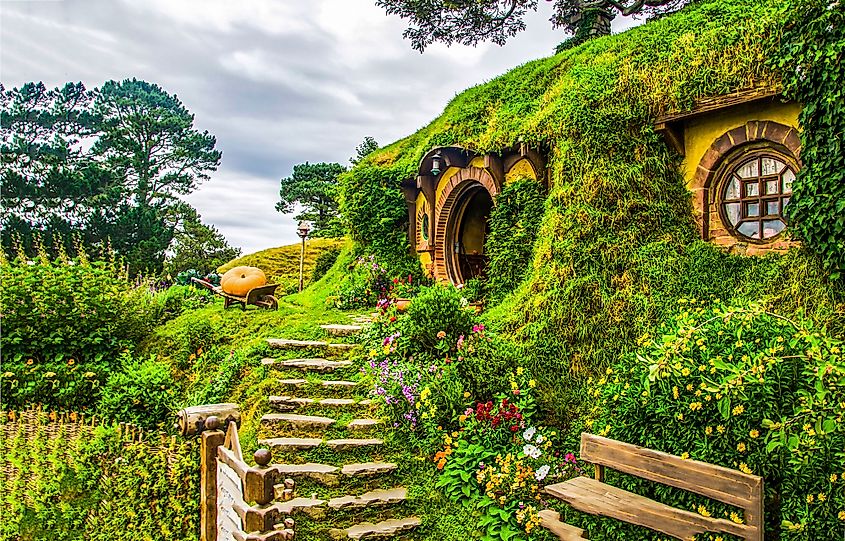
Sitting within lush landscapes of the grassy hills in New Zealand, Hobbiton is known for its scenic façade making it possibly the most recognized village in the world, by exuding the atmosphere from the movie The Lord of The Rings. While most sets are constructed to be later torn down-up, Hobbiton, initially set-up by the same process with a temporary mindset of being meant specifically for filming, it went on to become a permanent official settlement of the country with residents.
It is a frequently visited destination by the motion-picture fanatics from all over the world, with no other place even loosely resembling the scenes of the movie as closely, than the experience of visiting this village, according to most. Walking the streets of Hobbiton has been confirmed by many to transfer them into the real atmosphere of the Hobbit town. Hobbit holes are inclusive, exuding an aura from the popular saga.
Mountain Village, Iran
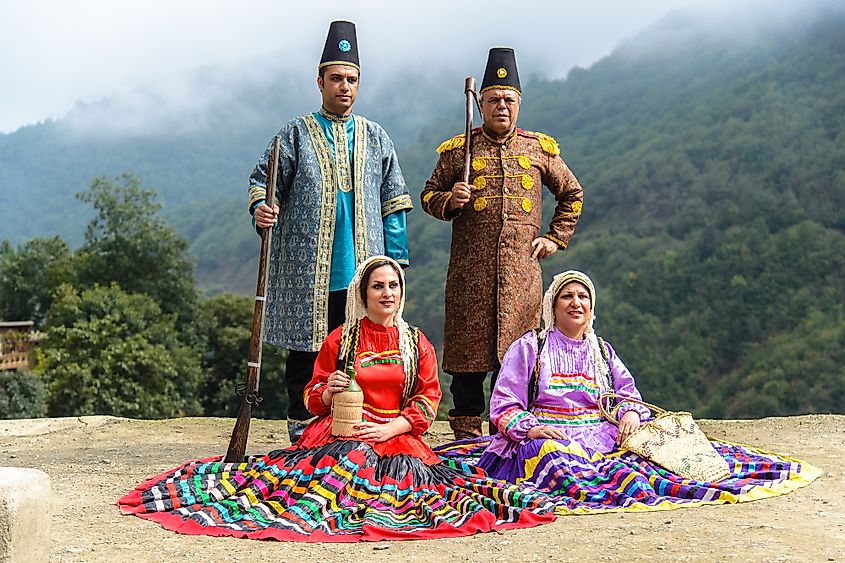
This village, engulfed by the Alborz Mountains, where every view is a rooftop, was called for its mountain shape from the original Masouleh. Known for its magnificent landscape and a natural historical architecture above the Caspian Sea, it has been a UNESCO Historical Heritage Site since September 2015. Visiting this stunning place, will immerse one in the culture of the country, as well as be able to partake in the local handicraft and traditions. Sitting in a constant blanket of fog, the yellow-bricked mud houses are constructed partway up a steep mountainside. Many of them have a winter room, set at the back getting insulation from the thick, clay walls.
Built some 1000 years ago, the strategic design still serves the purpose to protect from floods in the valley, while the enormous granite wall guards it from the powerful mountain winds. The steep incline of 100 m elevation change did not stop the residents from optimizing the available space by installing restaurants. Even a market sits on the clay, stone, and wooden rooftops of other houses that withstand foot traffic, weight of other constructions, as well as the wet climate of the region, with around 150cm of annual rain and snow. Almost since inception, the village has been functioning as a trading hub, while for memories and souvenirs there are colourful scarves and handmade dolls sold at the stands integrated into the hillside of this unique place.
Popeye Village, Malta
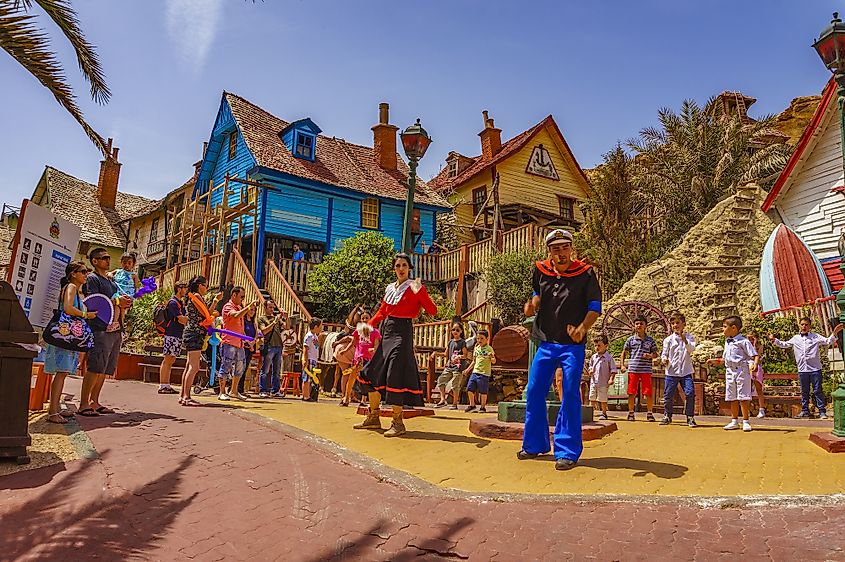
Located just off the Mellieha Bay, this tiny village in the history-rich and naturally beautiful small island country gets its worldwide recognition having served as the movie set for the Popeye musical, and is a must-visit when in Malta. Its most known attraction is "Take 2 filming", where one can partake in the filming process as an actor in a live action movie, happening every day. Exploring the charming village with the rustic houses and decrepit buildings after visiting one of the many local beaches makes for a charming day.
With the filming ending to produce the movie in 1980 featuring Robin Williams, the late comedian and actor, the village quickly became abandoned. Soon, it was restored as a vamped-up ’80s movie set, becoming a cluster of colorful wooden homes, some for local actors, who work in the area proposing an array of fun activities for curious visitors to see and engage in. Aside from spectating daily shows, there are boat rides to take, museums to visit, and wines to taste, as well as numerous themed playhouses for the little ones.
Reine, Norway
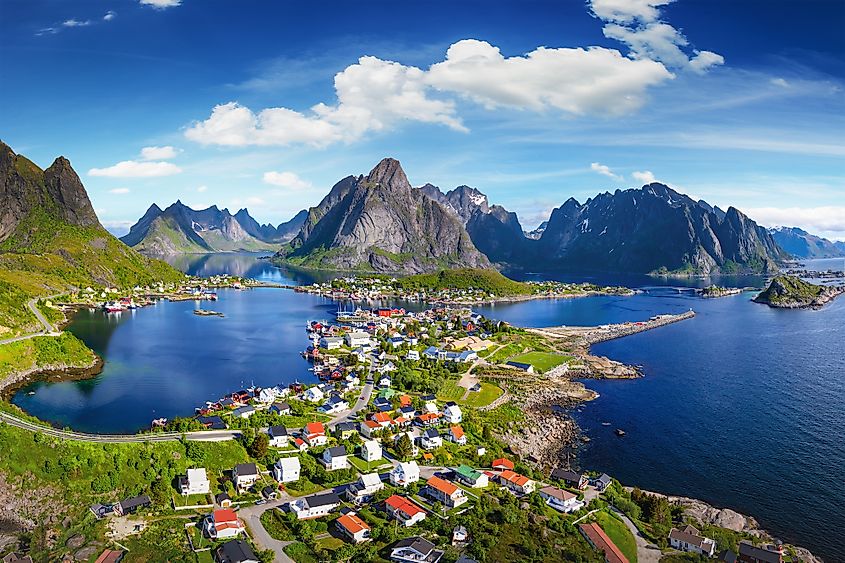
Located on the island of Moskenesøya, in the northern Norway’s Lofoten archipelago, this picturesque fishing village with only some 300 residents sits at the mouth of Reinefjord in close vicinity to the magnificent Loften peaks. There, one can go whale-watching, fishing, biking or kayaking during the day, and spend the night at one of the converted fisherman’s cottages. Also, reconnecting with nature through bird-watching in the forest and camping out under the stars to spectate the beautiful northern lights cannot be beat. Although the Lofoten Islands are often stormy, being located 100 kilometers above the Arctic Circle, Reine offers one of the world's best spots for the Auroras Borealis sighting on a clear night, from September to April.
The shores are perfect for strolls in between the red and white fishermen’s huts or hiking the feet of the surrounding peaks of the Reinefjorden. The quaint village with uncontested natural environment and Coop Market in the center also has access to impeccable beaches for swimming and picnicking. Horseid and Bunes are ferry-accessible across the Reinefjorden, following a scenic hike. The Horseid Beach, reachable from the hamlet of Kjerkfjorden is a two-hour walk each way across the white sands along the granite walls. Bunes Beach known as a family-time camping retreat, can be reached by crossing the water to the village of Vindstad.
Riomagiorre, Italy
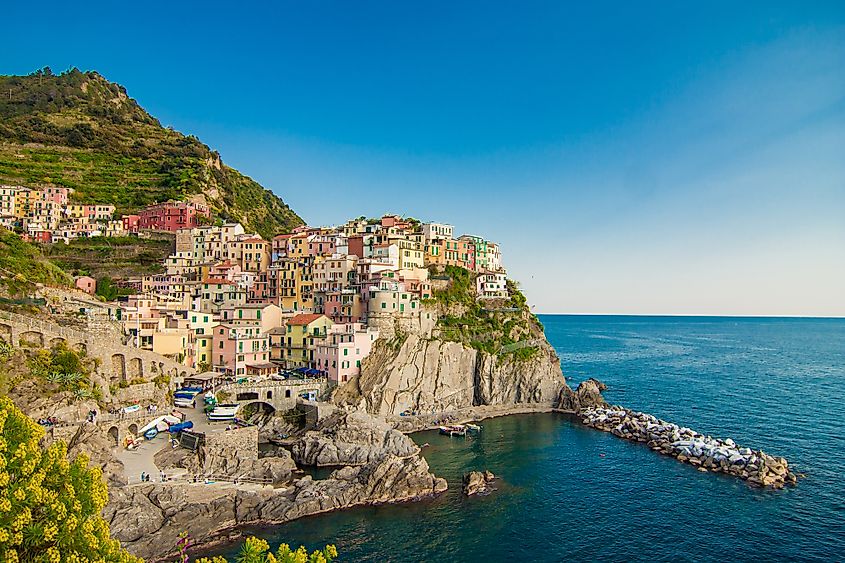
The village is set in Liguria, a small region of Italy on the western coast of the country within the beautiful Italian Riviera. As one of its most attractive features, the location, allows for scenic walks along the unique landscape of the famous coastal leeway, visiting other villages located both ways. Starting from Via dell’Amore (Lover’s Lane) that leads to Manarola, gives one the glimpse of the romantic atmosphere awaiting within. Aside from a paths network, the Cinque Terre (five towns) is also connected by rail, as well as local trains from Genoa and La Spezia.
As the most southern village, reachable from La Spezia by a quick train ride, Riomagiorre is accessible through a short pedestrian tunnel from the train station. The Via Colombo street offers many authentic restaurants, and cafes with some of the best coffee in the world. There are numerous B&Bs, as well as shops and boutiques to stock up on everything Italian. Looking for a milder coastal climate to grow grapes and olive trees, the village was set up by the Vara valley residents in the 8th century. The stone-walled houses with slate roofs and colourful exteriors sit in an ascending manner over the sea, with the ridge opening up in the middle to access the partially-immersed rock-supported docks from town.
Shirakawa-go, Japan
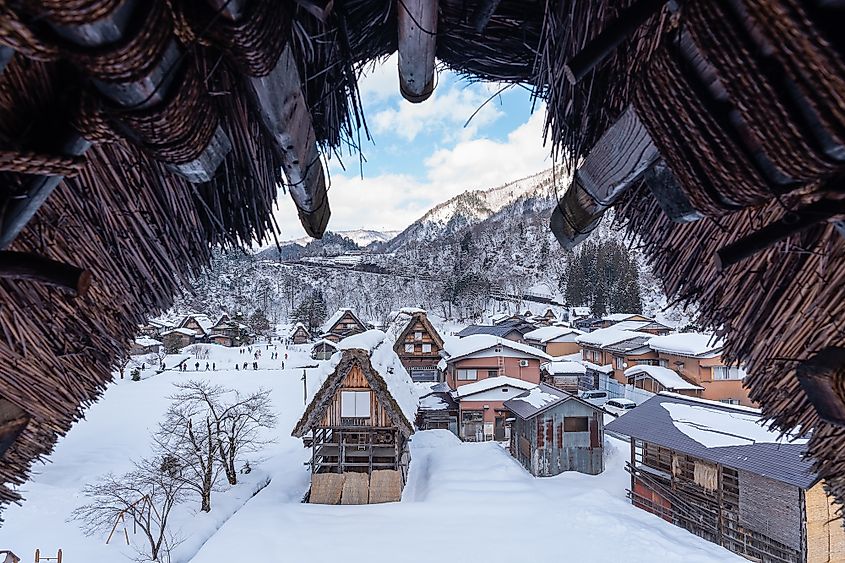
Rolling rice fields-surrounded and river-bounded, the quiet Shirakawa-go village at the foot of Mt. Haku-san is picture perfect with traditional thatched-roof farmhouses, among the last of its kind in Japan. The Gassho-style houses, some 250 years old, were made upon cultivating mulberry trees and rearing silkworms. There, one can learn to make soba noodles or engage in the traditional art of dying and weaving alongside the reserved but always welcoming locals. By immersing into the atmosphere of the village, one experience the real essence through the spiritual and the material evidence of the long history.
Due to its mountainous location, the locals have traditionally been cut off from the rest of the world, but the common spirit of its villagers has survived and thrived to overcome the drastic social pressures and economic changes in Japan since 1950. Sitting in the rugged high-mountain Chubu region of central Japan with the Sho River, Gifu, and Toyama Prefectures in close proximity, they have adopted a perfect symbiotic relationship with the environment that answers in kindness to the social and economic needs and faced by the people.
Simiane La Rotonde, France
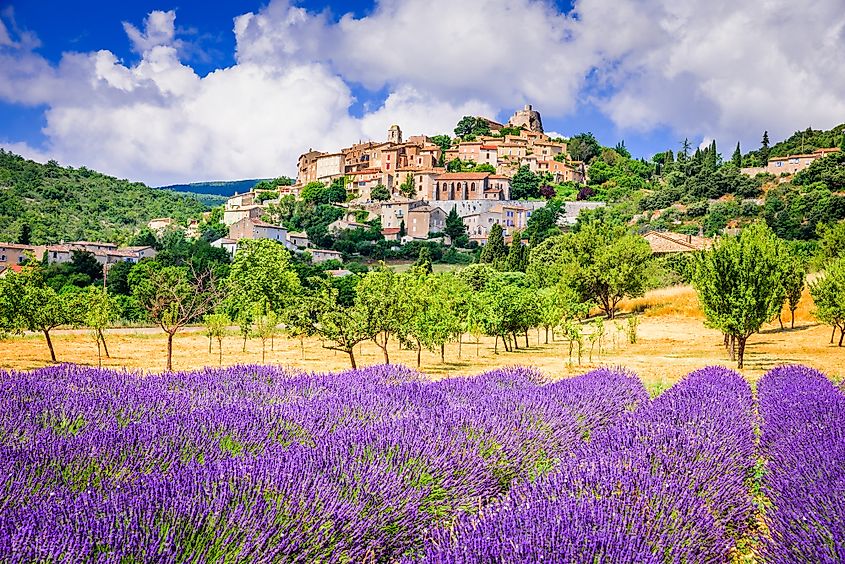
Set on a hilltop of southern France in the surrounding of the olive groves, Simiane La Rotonde is a well-preserved village with strong character and rich history. One can stroll the narrow streets of cobblestone between the 16th to 18th centuries-built stone houses, admiring architecture of the past, including the medieval castle with 1,000 years old center dome tower. The village was named after the rotunda of an ancient castle, the Château des Simiane-Agoulthas, which has been partially restored and now contains the Sainte Victoire Aromatherapy Laboratory. On a clear day, the eastern peaks of the Alps show themselves far off to the east.
With lavender fields nearby, therapeutic aromatherapy procedures are commonly offered, but one can be serviced by the nature herself in the nearby Abbey of Valsaintes garden. The Cistercian monks who came to the region in the 12th century found a garden in 1600s with 500 varieties of roses. There is also a sundial carved into a rock and a 12th century Romanesque church in the village, while the views of the lowlands, having been called the "living natural patchwork" of textures and colors with fields of clary sage, lavender, spelt, chickpeas, and sheep prairies, are treat for all senses.
All villages on this list are stunning with a spotlight on their atmosphere, configuration, history, surrounding nature, or even the people and culture. Many of these villages check off more than one, well-deserving of the spot, among many other beautiful villages in the world left unmentioned.
